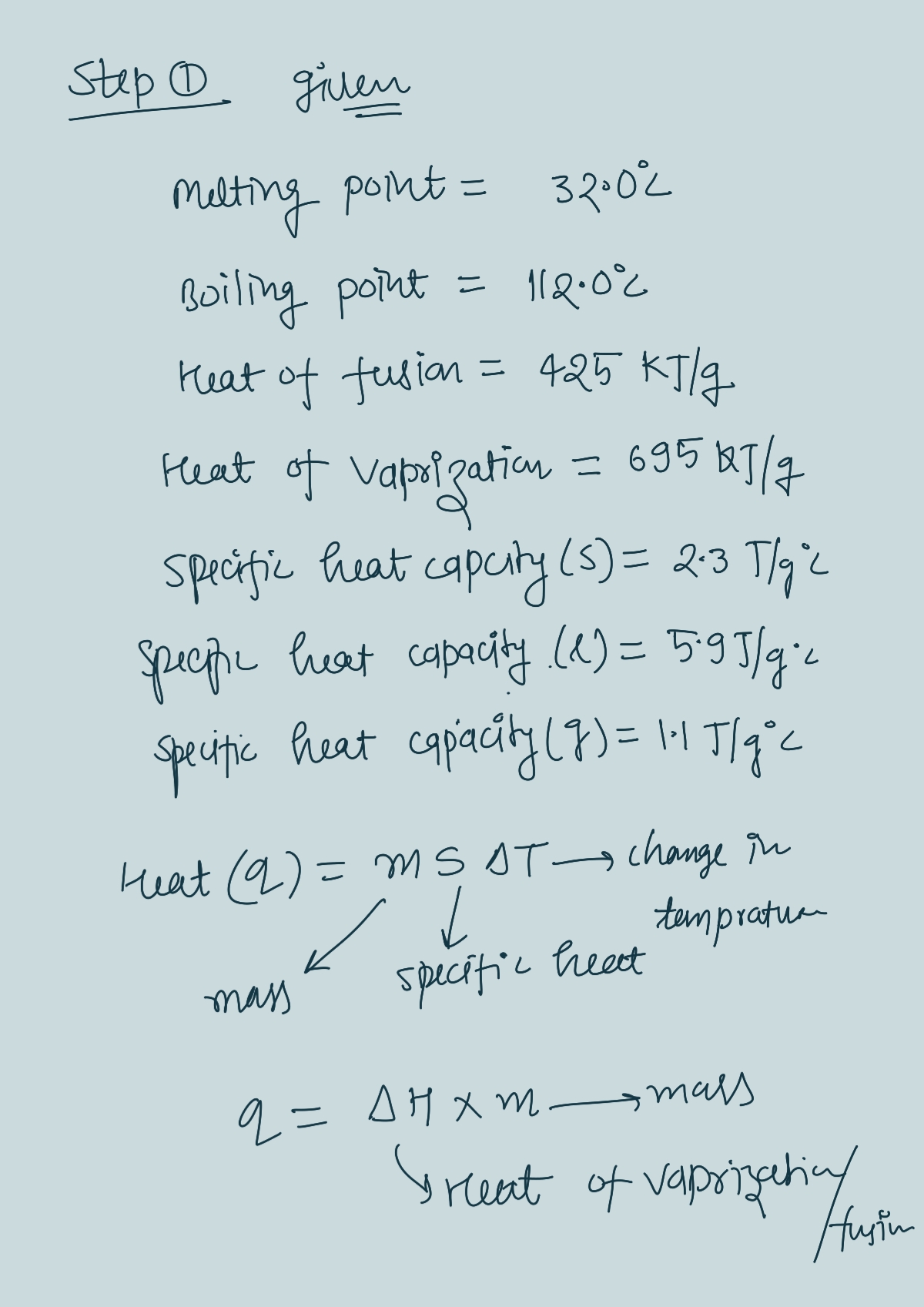TICE The data below refers to an unknown substance, X. Boiling Heat of Heat of Point Fusion Vaporization 425 kJ/g 695 kJ/g 1. Draw a heating curve for substance X, going from Melting point 32.0°C 112.0°C 125 Call formulas used to calculate heat. 112°C- 32°C- &q=m Alifus F Em SS AT SH Capacity (solid) SH (liquid) 2.3 J/g°C 5.9 J/gºC 1.1 J/g°C 15°C to 125°C on the axis below. Write in A GEMSVAT с атаниро q=ms, AT 15°C b. Determine the amount of heat released when 15.0g of gaseous X at 112.0°C changes to liquid at 112.0°C. 9=15.09x695k/g 9= = ΜΔΗ vaporization 9-10425K) -695k/g c. Determine the amount of heat necessary to convert 15.0g of solid X at-32.0°C to liquid at 32.0° C. 9= AH == AH = d. Determine the mass of X that can be heated from-38°C to 102°C using 4500J of heat. m = AH= e. Find the final temperature if 150g of X, at 19°C, receives 650J of heat SH (vapor) AH-
Thermochemistry
Thermochemistry can be considered as a branch of thermodynamics that deals with the connections between warmth, work, and various types of energy, formed because of different synthetic and actual cycles. Thermochemistry describes the energy changes that occur as a result of reactions or chemical changes in a substance.
Exergonic Reaction
The term exergonic is derived from the Greek word in which ‘ergon’ means work and exergonic means ‘work outside’. Exergonic reactions releases work energy. Exergonic reactions are different from exothermic reactions, the one that releases only heat energy during the course of the reaction. So, exothermic reaction is one type of exergonic reaction. Exergonic reaction releases work energy in different forms like heat, light or sound. For example, a glow stick releases light making that an exergonic reaction and not an exothermic reaction since no heat is released. Even endothermic reactions at very high temperature are exergonic.


Step by step
Solved in 3 steps with 3 images









